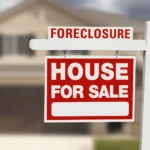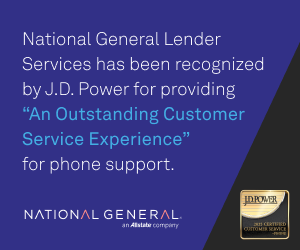For many Americans, homeownership is seen as the pinnacle of wealth. The American Dream is a historically ideal status to achieve, but for many, it’s becoming further out of reach.
New Creditnews research revealed that inflated housing costs and stagnant wages are pushing many first-time homebuyers to the sidelines, leaving them with little opportunity to purchase a home.
In fact, buying a median-priced home on an average wage today is “as hard as it has ever been”, according to Sam Bourgi, Senior Analyst at Creditnews.
In addition, according to recent data from the Federal Reserve, homeowners have a net worth that’s nearly 40 times higher than renters.

Two questions remain: Are “starter homes” as unaffordable as the average home? Is the ongoing housing affordability crisis a uniquely American phenomenon or a common pattern seen across the globe?
Key Highlights:
- In the U.S., it takes an average of 3.7 years of PPP-adjusted income to afford a “globally benchmarked” starter home, assuming an average 636-square-foot, two-bedroom unit price of $287,000. This compares to the 5.6 years of income needed to afford a median-priced home priced at $431,000.
- Switzerland has the worst affordability for starter homes, as it takes 13.5 years of PPP-adjusted income to afford a 636-square-foot two-bedroom unit.
- Among the other OECD countries studied, Turkey (2.7 years), Belgium (3.5 years), the U.S., and Costa Rica (3.8 years) have the most affordable starter homes.
- Although the U.S. is grappling with the worst home affordability crisis in history, Americans can still get more space with a considerably smaller proportion of income compared to other countries if they’re willing to downsize to smaller condos.
The drawback is that these “globally benchmarked” starter homes are considered “too small” by normal American standards.
“In the U.S., it takes an average of 3.7 years of income to buy a “globally benchmarked” starter home,” said Bourgi. “That’s much lower than in Canada, Australia, New Zealand, and most major European countries. The catch is that these units don’t appeal to many Americans. After all, the American Dream often envisions a detached home, backyard, and picket fence instead of a European-style condo.”
So, how many years of income are needed to cover the full cost of a starter home across 26 Organization for Economic Cooperation and Development (OECD) countries?

These “globally benchmarked” homes differ from the typical American market (i.e., single-family detached), as they offer much lower price points than the median home price in the U.S.—an estimated $431,000 as of Q3 2023.
In the U.S., it takes 3.7 years’ worth of income to afford a typical starter home priced at $287,000. This is significantly less than the 5.6 years of income needed to afford a median-priced home.
Countries with comparable affordability ratios include:
- Turkey (2.7 years)
- Belgium (3.5 years)
- Costa Rica (3.8 years)
- Colombia (3.9 years)
- Chile (4 years)
Known for the Swiss Alps and the ever-popular cheese, Switzerland unfortunately tops the list for having the most expensive two-bedroom units in major city centers, requiring a whopping 13.5 years’ worth of income to afford such a property.
Alongside the Playground of Europe, the least affordable countries for starter homes are:
- Australia (7.7 years)
- Japan (7.7 years)
- France (7.1 years)
- Germany (7.1 years)
- New Zealand (7.7 years)
- Sweden (7.7 years)
- Canada (7 years)
While other countries offer less space, the real question is…are American houses too big?

Although starter home prices have increased, Americans still have options to find affordable homes. But they’ll need to look beyond popular, expensive metros like New York City, Miami, Los Angeles, Phoenix, Seattle, Boston, and so on.
A January 2024 report by This Old House revealed the cities where starter homes remain highly affordable relative to income. Unlike Creditnews’ study, these starter homes also include single-detached units with a backyard.
The study ranked the top 10 cities for starter homes based on cost, mortgage rate relative to income, concentration of restaurants and entertainment, and violent crime rate.
Based on these criteria, the top five cities were:
- Fort Wayne, IN
- Laredo, TX
- Virginia Beach, VA
- Oklahoma City
- Louisville, KY
Three of the top 10 cities were located in the Lone Star State, Texas—one in Florida, one in Arizona, and one in Nevada—highly desirable states based on net migration. Some eight of the ten cities have average starter home costs below the $287,000 average in Creditnews’ study.
But also, American housing units are typically much bigger than those in other nations.
According to This Old House, starter homes in the U.S. typically range from 1,200 to 2,000 square feet. In comparison, average home sizes in Europe range from about 930 square feet in the U.K. to 1,140 square feet in Portugal, according to a 2021 study published in the National Library of Medicine.
In major economies like Germany and France, average home sizes are just over 1,000 square feet—much smaller starter homes compared to the U.S.
Provided they are willing to downsize to European standards, Americans can still get more space with a considerably smaller proportion of income compared to other countries.
To read the full report, including more data, charts, and methodology, click here.







